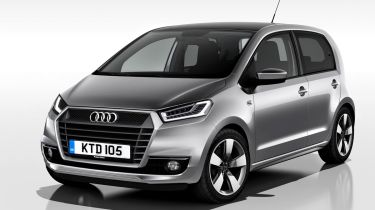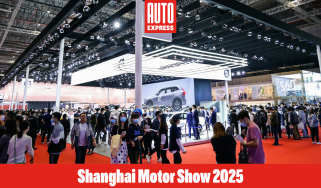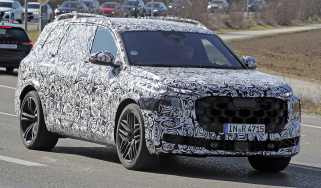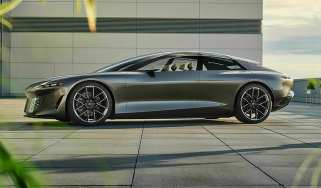Audi VW up! rival coming
Exclusive images show look of posh new Audi A0. City car based on VW up! could be on sale in 2015
Audi is working on its own version of the Volkswagen up!, Auto Express has learned. Our exclusive images show how the car might look, and it could arrive as soon as 2015.
Audi CEO Rupert Stadler has said he wants such a model by the second half of the decade. And should the new entry-level car get the green light, it would share most of its tech with the up!, SEAT Mii and Skoda Citigo, while adding a distinctive look and a more premium interior.
At present, the VW, SEAT and Skoda use the VW Group’s New Small Family (NSF) platform, and all are built at VW’s plant in Bratislava, Slovakia. The new Audi – which would sit below the A1 in the range and could be badged A0 – would sit on the same platform and be assembled on the same line.
However, to ensure the car could command a price premium over the up! – it’d be expected to start at £11,500 – it’ll get a look all of its own. This will include hi-tech headlamps and LED tail-lights, Audi’s trademark trapezoidal grille and a range of alloy wheel options.
There’d be an upmarket makeover inside, too, with a better-integrated infotainment system, leather trim and improved plastics to justify a higher price than the up!, which starts at £8,185.
The Audi would come with the 109bhp 1.0-litre TSI petrol engine that was used in the up! GT concept, rather than the 59bhp or 74bhp engines in the current cars.
And it would also give the aborted up! GT a chance to come to market – albeit not as a VW. The concept was a pet project of then VW R&D boss, Dr Ulrich Hackenberg, who’s since moved to Audi to replace previous tech chief Wolfgang Durheimer.
In addition, the baby Audi is set to be offered with an all-electric drivetrain taken from the e-up! (hence the lack of tailpipes in our illustrations).
It could even get the VW XL1 diesel-electric hybrid set-up. As well as the new city car, Stadler is keen to add a small MPV and two new crossovers to the Audi line-up in the coming two years (see panel, right). This forms part of his bid to increase the brand’s global sales from 1,455,100 models in 2012 to two million units by 2018.
Find a car with the experts







